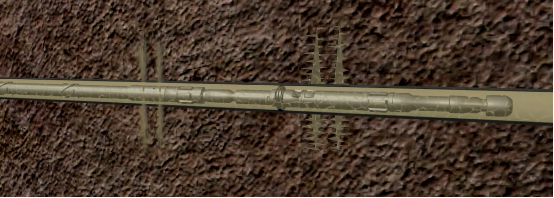|
About VSPAs well known, Vertical Seismic Profile (VSP) is a technique of seismic measurements used for correlation with surface seismic data. The defining characteristic of a VSP (of which there are many types) is that either the energy source, or the detectors (or sometimes both) are in a borehole. In the most common type of VSP, Hydrophones, or more often geophones or accelerometers, in the borehole record reflected seismic energy originating from a seismic source at the surface. There are numerous methods for acquiring a vertical seismic profile (VSP). Zero-offset VSP have a source close to the wellbore directly above receivers. Offset VSPs have sources which are some distance away from the receivers in the wellbore. Walkaway VSPs feature a source that is moved to progressively farther offset and receivers held in a fixed location. Walk-above VSPs accommodate the recording geometry of a deviated well, having each receiver in a different lateral position and the source directly above the receiver. Salt-proximity VSPs are reflection surveys to help define a salt-sediment interface near a wellbore by using a source on top of a salt dome away from the drilling rig. Drill-noise VSPs, also known as seismic-while-drilling (SWD) VSPs, use the noise of the drill bit as the source and receivers laid out along the ground. Multi-offset VSPs involve a source some distance from numerous receivers in the wellbore. New Applications of VSP: - Horizontal Well Fracturing Monitoring - Cross Dipole Acoustic Analysis in Cased Hole - Suitable for Hostile Environment - Horizontal well fracturing monitoring Fracturing is a well-stimulation technique in which rock is fractured by a pressurized liquid to increase oil and gas recovery in low porosity or permeability wells. The process involves the high-pressure injection of 'fracking fluid' (primarily water, containing sand or other proppants suspended with the aid of thickening agents) into a wellbore to create cracks in the deep-rock formations through which natural gas, petroleum, and brine will flow more freely. When the hydraulic pressure is removed from the well, fracturing proppants hold the fractures open.Horizontal well fracturing monitoring job has to face lots of challenges. Toolstring has to stay a long time in borehole without movement and transmission errors. For long time operation, maybe one month, MultiVSP won’t supply power all the time. The fail safe spring loaded locking arm design allows safe operation, operator only need to supply power when the fracturing operation start. The motor is opened all the time even it is power off suddenly. And, unique bypass function allows continuous operation in case of one level of the downhole toolstring is broken, the passby function makes other levels continue to work correctly. Before fracturing, MultiVSP arms touch the monitoring well wall receives perforation signal from the fracturing well to get azimuth data. Under some extreme conditions, decision makers decide to do other operations or jobs in this monitoring well. MultiVSP toolstings have to pull out of hole before fracturing monitoring is over. To save cost for clients and avoid perforation again, a relative bearing sensor is designed inside MultiVSP. When MultiVSP reaches to the same depth and open arms again, the azimuth where downhole tools touch borehole wall is changed. MultiVSP could find relative bearing by relative bearing sensor, therefore, it helps to confirm the touching azimuth. MultiVSP has a 12-levels downhole sensors, those provides a wide range of reservoir seismic data. And 0.25 millisecond sampling rate provides large and accurate data at the same time. All above provides enough time and high quality data to horizontal well fracturing monitoring operation. All of these give a High Resolution, High Definition and High Precision result.
Applications: Real-Time Monitoring: Check fracturing effect, fractures shape real-time analysis, fracturing parameters (such as pressure, sand, fracturing fluid, etc.) real-time adjust, fracturing engineering real-time guidance, fracturing program optimization. Fracturing Evaluation: Provides fracture geometry network map, information comprehensive analysis (by logging, petrophysical parameters, seismic data, etc.), stimulated reservoir volume (SRV) estimate. Development Applications: Providing fractures space form, maximum main geo-stress orientation, etc. Provide important reference for oilfield development well pattern (horizontal wells distance, horizontal interval length, separate zone fracturing and fracturing interval length, etc.). - Cross Dipole Acoustic Analysis in Cased Hole Combined Multi-Dipole Array Acoustic Logging Tool (MAA) and Gyroscope Orientation Tool (ORT-C), it solves the problem of MAA doesn’t work in cased hole. The logging curve shows the fracturing effect directly. - Suitable for Hostile Environment PiezoVSP provides reliable seismic data in temperatures up to 190oC and pressures as high as 20,000 psi. The piezoelectric sensor inside the instrument receives the acoustic coupling signal from drilling fluid generated by seismic wave. Therefore, it is no need to touch sidewall. No arms design reduces the operation risk and improve efficiency. Slim 48 mm OD ensures that the downhole tools won’t stuck, and reduces the possibility of wireline adsorb on sidewall. It is easy to fishing and logging through pipe, even though special bit, may instead of Seismic While Drilling (SWD) sometime. |



